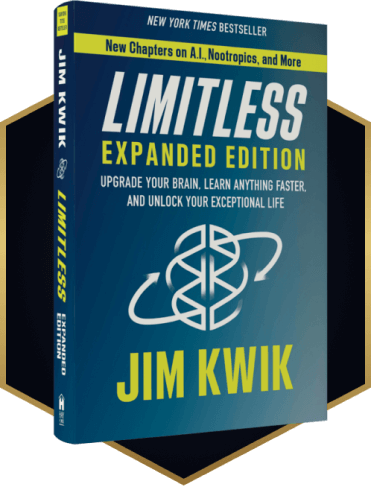You already know setting goals helps you move forward in your life to achieve more. In fact, goal-setting can be one of the most powerful tools you have when it comes to changing habits and shaping your life. They can help you focus on what’s important, find motivation to do the hard things, help you overcome obstacles and difficulties, and even make things you once thought out of reach become attainable.
But goals do more than help you make things happen. They help shift your perspective on what you believe is possible. That happens because goals can actually restructure your brain, creating new neural pathways that allow it to work more efficiently. Those changes focus your energy on reaching your goal, which then turns these new behaviors into habits. Here’s a closer look at the neurology of goal-setting and how you can use it to work for you.
A Deeper Look at the Brain
In the same way your skin heals from cuts or scrapes, your brain has the power to restructure itself. This process is called neuroplasticity. It allows your brain to reorganize synaptic pathways after a brain injury, such as a stroke. But it also helps your brain adapt and change your behavior in response to new information.
This process is incredibly effective when it comes to goal setting because your brain loves direction. Goals give your brain a purpose. Once it knows you have a focus, it will actively seek out information in your environment to support that focus. This in turn creates new neural pathways as you change your behaviors in order to achieve your goals.
You can see the power of neuroplasticity in a study of multiple sclerosis patients done at the University of Texas. Researchers found that patients who set aggressive goals regarding their health and wellness, had fewer and less severe symptoms. Focusing on their goals healed their brain.
The Importance of Meaning
Setting a goal is only one piece of the process. Research shows that the more a goal means to you, the more likely you are to achieve it. This is because your brain routes a lot of information through your amygdala. There it evaluates and determines the level of emotional significance to events. It then loops that information to your frontal lobes for higher-level cognitive processing. That means having goals rooted in meaning will always get a boost in importance.
It might feel like some goals are set because we have to, not because we want to. You can see the motivation difference in terms of similar goals. Saving money to pay off debt can feel far different than saving for a dream vacation. Though debt is stressful, imagining yourself on vacation has a much larger emotional significance attached. That alone gives it much higher priority in your brain.
The trick is to attach emotional significance to your goal. Paying off debt may not be as motivating as a vacation, but if you pay off your debt so you can go on vacation, you’ve elevated the emotional attachment. Every time you make a payment, say no to the add-ons while shopping, or otherwise restrict your spending, you can picture yourself debt-free AND on vacation. Your motivation will naturally increase. But more importantly, your brain will also work harder to minimize obstacles and difficulties. The more your goal means to you, the more likely you’ll find ways to achieve it.
Finding the Rewards
As mentioned above, a lot of goal-setting comes down to the amygdala and the frontal lobe. It’s combining logic—SMART goals—with emotion—HEART goals. That creates to powerful driver known as motivation. But there is a third aspect of your brain that guarantees goal success: your rewards system.
Your brain is designed to reinforce behavior by releasing the neurochemical dopamine whenever you engage in activities that keep you alive. Eating food, drinking water, even falling in love, as you’re more likely to survive when you build relationships. But this reward system is also tied to learning. When you learn something new, your brain rewards you with a dopamine surge that boosts your mood and makes you feel happy. Because dopamine is so potent, your brain craves more of it, creating motivation for you to seek more.
This process is known as the reward loop and you can use it to create habits. Once you’ve attached emotional significance to your goal, you can use the reward system to break them down into smaller steps. Your frontal lobe is designed to evaluate and assess the logistical breakdown of your goals, which will allow you to visualize and plan each minor goal within your larger one. Each step should have a defined measure for success and a specific way we want to celebrate that success. These external rewards will activate your internal reward system, giving you even more motivation to continue to the next step.
Conclusion
No matter what your goals are, your brain is hardwired to help you achieve them. By understanding the power of neuroplasticity, finding a way to connect emotion to logic, and creating a system of external and internal rewards, you can overcome any and all obstacles for whatever goal we strive towards.
If you want to learn more about how the reward system drives your behavior, watch this video:







